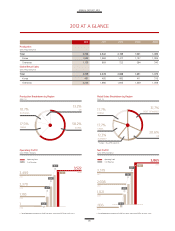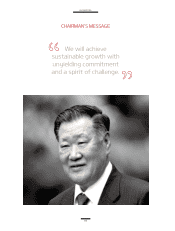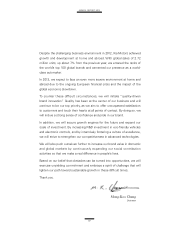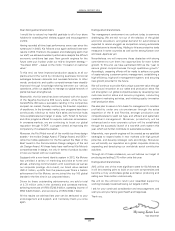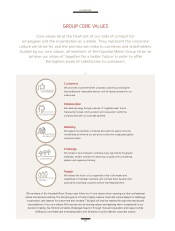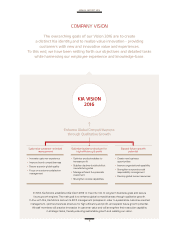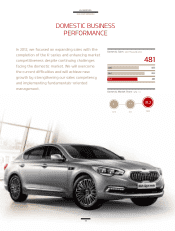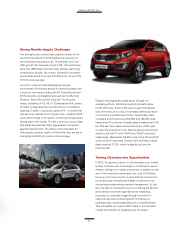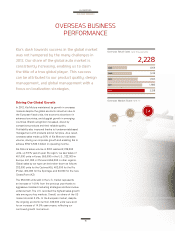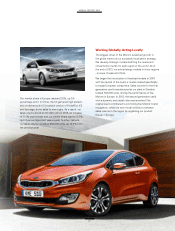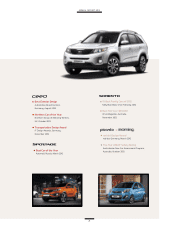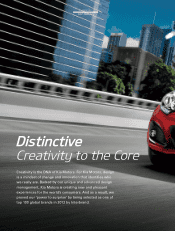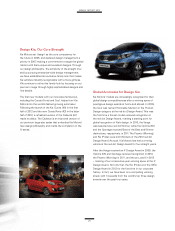Kia 2012 Annual Report Download - page 15
Download and view the complete annual report
Please find page 15 of the 2012 Kia annual report below. You can navigate through the pages in the report by either clicking on the pages listed below, or by using the keyword search tool below to find specific information within the annual report.
Despite this progress brought about through our
unyielding efforts, Kia Motors posted domestic sales
of 481,000 units, down 2.2% year-on-year. This decline
was primarily due to a drop in domestic demand a result
of economic uncertainties at home. Specifically, sales
of sedans and RVs stood at 302,680 and 126,856 units,
respectively. The volume of sedan sales increased by 5.6%
but RVs saw their sales volume decline by 14.6% year-
on-year. The popularity of the K-series gained momentum
thanks to K5 and K7, with 76,910 and 19,957 units sold,
respectively. Meanwhile, 25,842 units of the K3 and 7,516
units of the K9 were sold. Overall, Kia’s domestic market
share stood at 31.2%, which is slightly up from the
previous year.
Turning Obstacles into Opportunities
In 2013, the gloomy outlook for the domestic auto market
is likely continue with a shrinkage in consumption due to
inflation arising from market uncertainty, in addition to the
end of the individual consumption tax cuts. Kia Motors,
however, will overcome the current difficult environment
by continuously intensifying its sales competency and
introducing fundamentals-oriented management. To this
end, we plan to intensively focus on fostering Kia Motors
as a premium brand through distinctive marketing,
boosting our corporate image through innovation in
customer services, enhancing staff confidence at
business sites, and strengthening our competitiveness.
This will enable us to gain a 32% share of the domestic
market and solidify our presence as a top player.
Strong Results despite Challenges
The domestic auto market was unable to shake off the
economic slowdown in 2012 despite the reduction of
the individual consumption tax. Of particular note, the
GDP growth rate hovered around 2.0%, its lowest level
since the 1999 Asian financial crisis, thereby restricting
consumption growth. As a result, demand for domestic
automobiles stood at a mere 481,000 units, down 2.2%
from the previous year.
In a bid to overcome this challenging business
environment, Kia Motors strived to expand its sales with
a focus on new cars including the K3 (Cerato/Forte) and
K9 (Kia Quoris), and flagship cars such as the Morning
(Picanto), Pride (Rio) and K5 (Optima). The K-series
range, consisting of K3, K5, K7 (Cadenza) and K9, covers
compact to large-size cars and has shown a consistent
upswing in sales. In particular, sales of K3 – a model that
has set a new standard for compact cars – reached 3,616
units within 9 days of its launch, confirming its status as a
raising star in the market. The K9, a premium luxury large-
size sedan launched last May, aggressively competed
against imported cars. The debut of the refreshed K7
with superior product quality in November also served to
strengthen Kia Motors’ premium brand image.


